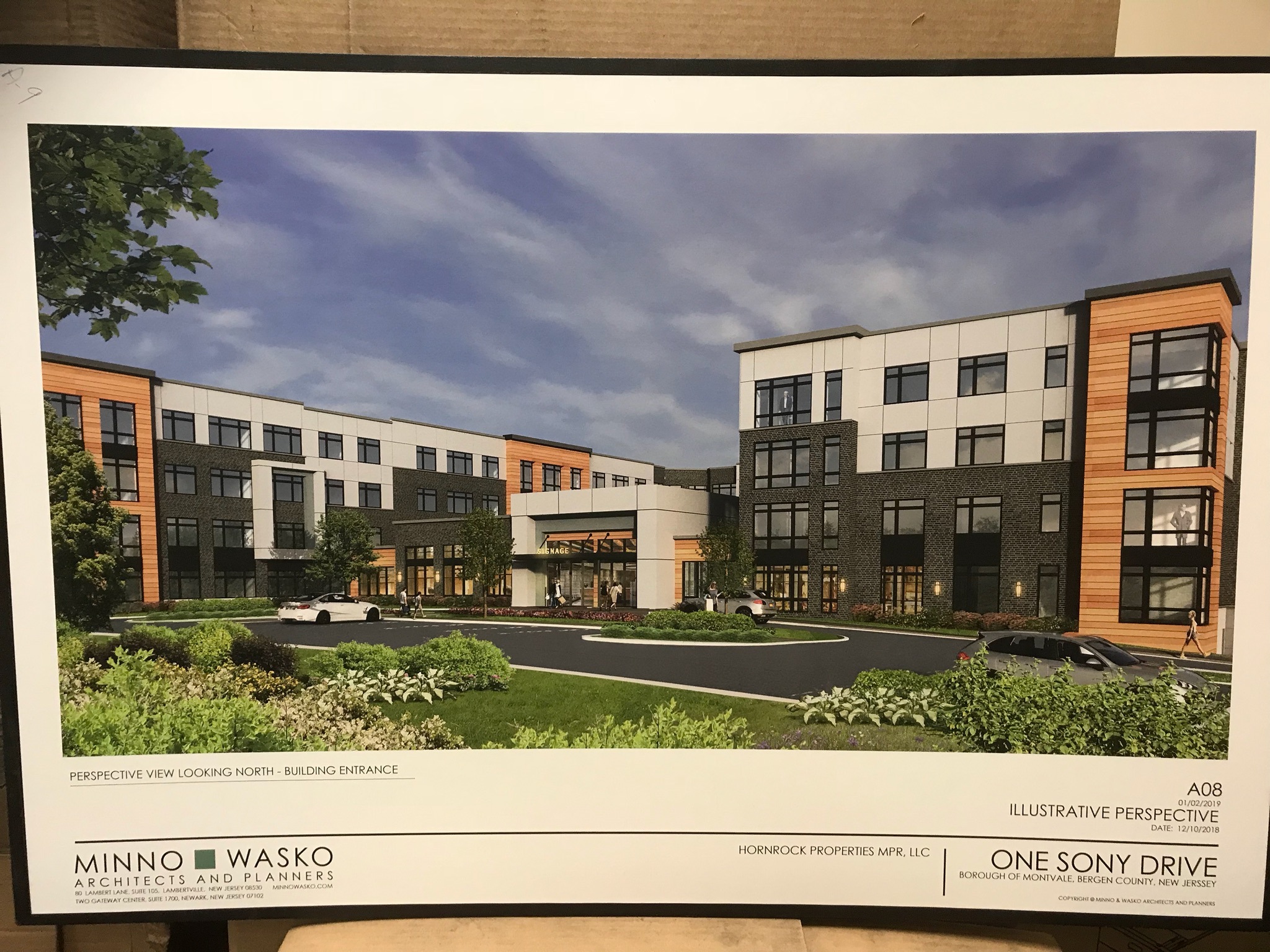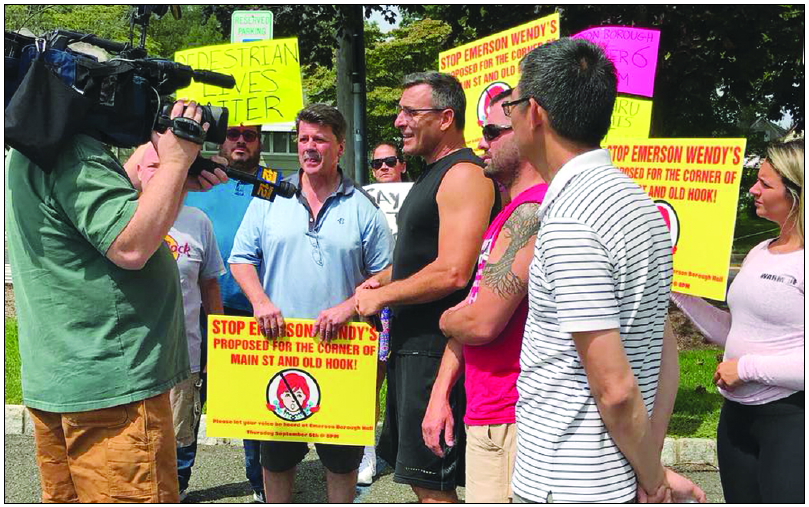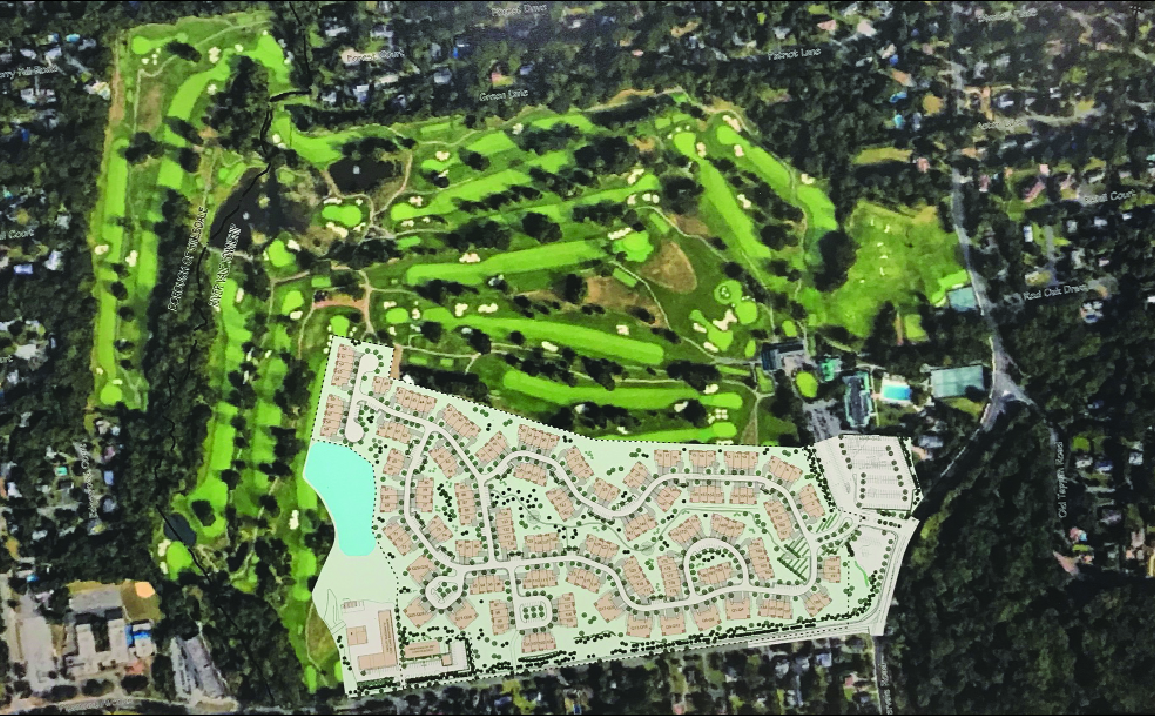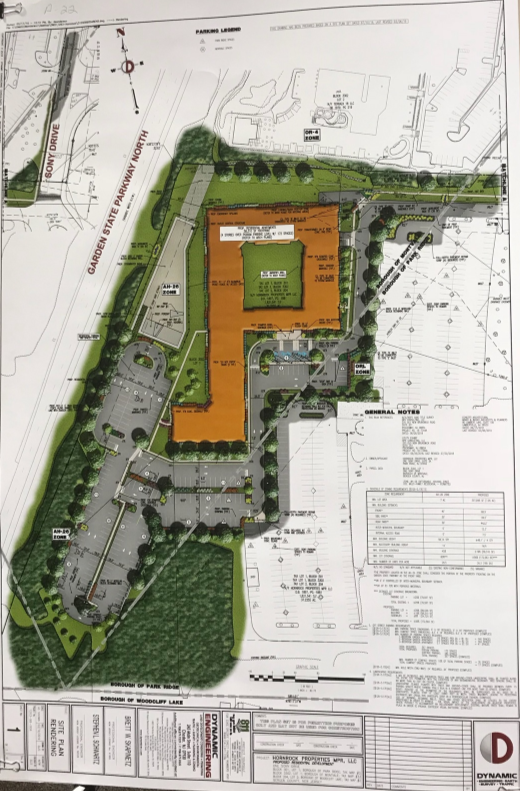
BY MICHAEL OLOHAN
OF NORTHERN VALLEY PRESS
PARK RIDGE, N.J.—A disagreement over alleged improper meeting notice and failure to share applicant documents nearly sidetracked the third Montvale Planning Board hearing for Hornrock Properties’ proposed 185-unit multifamily development held March 19 at Borough Hall.
The proposed 185-unit, 50-foot-high development will provide 37 affordable housing units for Montvale on a seven-acre lot in the borough’s newly rezoned AH-26 affordable housing zone.
The affordable housing units are part of Montvale’s affordable housing settlement approved in early 2018.
The proposed development site touches the boundaries of Woodcliff Lake, Park Ridge and the Garden State Parkway.
Hornrock v. Park Ridge
In Park Ridge, Hornrock is an intervenor in the borough’s affordable housing settlement, hoping to build up to 972 units on an adjoining 30-acre property, which Park Ridge has opposed for years.
A case conference before Superior Court Judge Gregg Padovano is scheduled for April 1. Previously, the judge has said he will set a trial date if the two sides do not settle soon.
Much of a two-hour Montvale Planning Board hearing March 19 was filled with the engineer and architect for applicant, Hornrock Properties, responding to technical deficiencies and modifications requested by borough professionals in letters exchanged over the last two months.
A fourth hearing is scheduled for April 16 at Montvale Borough Hall. Due to a prior application on the agenda, the Hornrock hearing did not start until 9:20 p.m.
Before testimony began, both Park Ridge attorney Carmine Alampi and resident David O’Sullivan questioned whether the hearing should be allowed to continue for different reasons. Alampi has attended the two previous hearings representing Park Ridge as an interested party and providing comments on the application.
Alampi charged that the public notice for the meeting was inaccurate because it failed to list at least the one variance being applied for and O’Sullivan claimed documents under discussion were not shared with him by Montvale despite a prior public records request filed under the state’s Open Public Records Act, or OPRA.
Applicant attorney Peter Wolfson said Hornrock was providing all documents to both Montvale and Alampi, although they were not required to provide them to Alampi, said Wolfson.
Alampi said despite not receiving certain documents in advance of the meeting, he would allow the meeting to continue.
The 20-minute dispute nearly stopped the hearing before it started, but Planning Board attorney Robert Regan said that Hornrock’s public notice included a “catch-all” phrase in case future waivers or variances were needed.
Regan said that Hornrock Properties had also filed all documents required for the hearing 10 days in advance to Montvale, which met board requirements. He said he found no reason to postpone the hearing.
Board Chairman John DePinto apologized that some applicant documents were not shared with O’Sullivan in advance and said he would try to make certain it did not happen in the future.
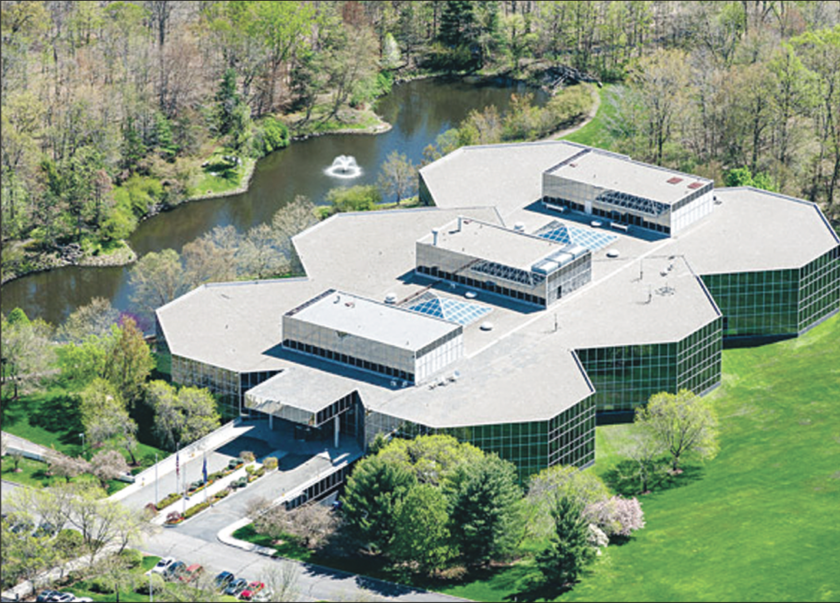
‘The vast majority’
Applicant engineer Brett Skapinetz, Dynamic Engineering, Chester, went point by point through a detailed letter from borough engineer, Maser Engineering, noting “we’ve addressed the vast majority of items” and pointed out a few minor disagreements with borough suggestions.
Skapinetz said a secondary means of access for emergency vehicles would be provided at the building’s southeast corner leading to a newly proposed paved area that would permit large fire apparatus to get in and provide fire coverage.
He said one walkway in the parking area would be offered and agreed to move a handicapped-accessible parking space closer to the building’s entrance to provide easy access for a handicapped individual.
He said the development’s planned access road—which starts in Park Ridge where Hornrock has applied for variances to build on that side—will be fully paved on the Montvale side as part of the applicant’s proposal.
The Park Ridge Zoning Board of Adjustment hearing on Hornrock’s access road application is tentatively scheduled for April 16. That hearing has been postponed twice.
At February’s hearing, a couple major questions nearly derailed the second Hornrock hearing when Wolfson said the applicant was waiting to submit revised site plans until all borough professionals weighed in. Chairman DePinto asked Regan if the hearing could continue without revised plans in hand.
Regan said the hearing could continue as Hornrock was only seeking preliminary approval for its application.
Later on Feb. 19, Montvale Mayor Michael Ghassali, a Planning Board member, raised a concern about whether a traffic study for the Montvale development should include a full Sony site build-out in Park Ridge.
However, the applicant’s traffic engineer said the traffic study was based on 972 projected housing units in Park Ridge.
No housing units have been approved for the Sony site in Park Ridge as Hornrock Properties, Park Ridge and Fair Share Housing Center negotiate a possible affordable housing settlement.
Park Ridge has fought Hornrock’s proposal for multifamily housing at its Sony site for years, with Mayor Keith Misciagna leading a charge against high-density, large-scale developments.
Misciagna and Borough Council members have approved hundreds of thousands of borough funds to legally oppose Hornrock’s efforts to build “inclusionary housing” there, which would include a 20 percent set-aside of affordable units to help fulfill the borough’s affordable obligations through 2025.
Alampi questioned Skapinetz about how he went about determining which side of the new facility comprised the front yard, which is defined both by local code and Municipal Land Use Law.
He said a violation of setback requirements was possible depending on what he based his determination of the front yard.
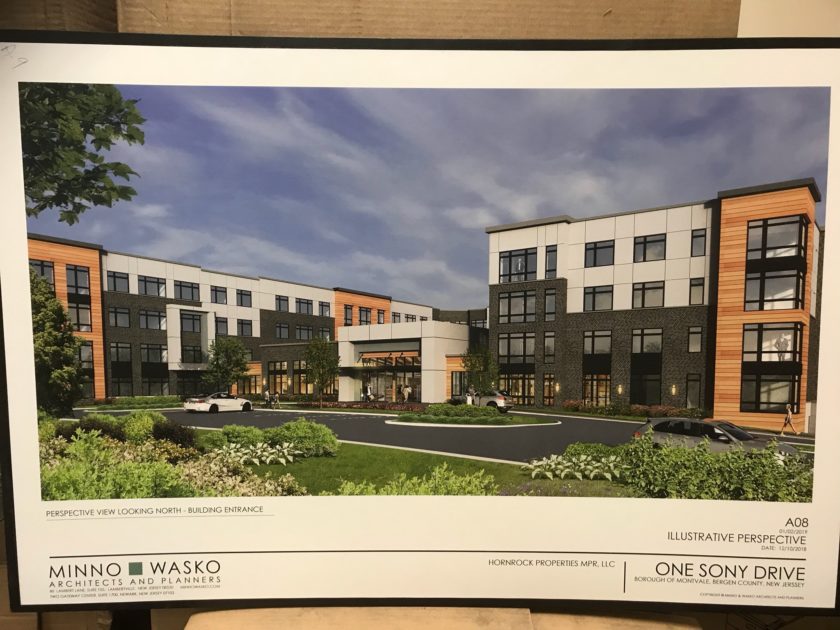
One variance required
Skapinetz said only one variance was required for lighting illumination, as any reduced illumination of lighting in the parking lot near the Park Ridge boundary likely created a safety issue, said Skapinetz.
Wolfson said that was the only variance the application sought.
He said the variance was needed due to an unusual situation of a shared municipal boundary and for public health and safety of individuals using the outdoor parking spaces.
Alampi sat at a table with traffic consultant Brian Intindola, of Neglia Engineering, who represented Park Ridge and was there to offer traffic testimony to rebut last hearing’s applicant traffic engineer, Nicholas Venderese of Dynamic Engineering, who said the traffic generated by the 185-unit development would have “a complementary effect” on area traffic flows.
No opportunity for traffic testimony occurred and Intindola left the hearing before it ended.
Only Skapinetz and architect David Minno, of Minno & Lasko, testified at the hearing before it concluded at 11:30 p.m.
Minno responded to previous questions and comments from borough professionals and an engineer’s letter on trash pickups, building shade impacts, and identification signs.
He agreed with a suggestion to include warning lights on the outside of a parking garage to warn pedestrians walking nearby.
He also said that a gas-powered generator would be provided should conditions require a water pressure boost.
Casting shade?
Minno showed what impacts the effects of shadows cast by the proposed 50-foot-high multifamily complex at different times of the day year-round.
Only during the winter did the building cast a shadow on a nearby facility’s pool, a period when no members would be using the outdoor slide and swimming pool.
When testimony concluded, O’Sullivan asked when the shade analysis was prepared by Minno. Minno said that day and O’Sullivan said he would have to make a records request for it.
Wolfson noted the analysis was prepared because O’Sullivan requested such an analysis.
Regan questioned what “relevance” a shade analysis has to the application.
“This is getting to be ridiculous. I appreciate Mr. Minno’s work but I think it’s wholly irrelevant. I’m making a point what’s relevant in terms of evidence and how is this relevant?” Regan said to O’Sullivan, who continued with questions for Minno and board professionals.
Editor’s note: This article has been updated to reflect that the case conference before Superior Court Judge Gregg Padovano is scheduled for April 1 (not April 2).

